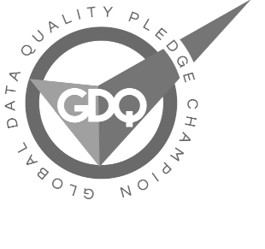 Clare McHatton
June 14, 2024
Clare McHatton
June 14, 2024
The tabloid media may not be the first place you would look for survey inspiration. But hear me out – anyone crafting consumer surveys could learn a trick or two from Britain’s most widely read rags.

Take The Sun, for instance. Love it or loathe it, the publication has mastered communicating complex information clearly and straightforwardly, striking a chord with the masses. It even tailors its language to an 8-year-old’s reading level.
There’s merit in adopting this conversational, engaging style. Hitting the sweet spot around the UK’s average reading age of 11 could boost understanding, engagement and data quality.
The rationale for targeting specific reading levels in surveys and mass communications is clear when you look at the readability across Britain’s top papers:
- The Sun – Reading age around 8
- The Mirror – Reading age around 10
- The Daily Mail – Reading age 10-11
- The Daily Express – Reading age 12
- The Times – Reading age 16
Notice how the tabloidy Sun, Mirror and Daily Mail sit well below adult levels at 8-11 years old. Even upmarket papers like The Times only reach around 16.
- So why does The Sun dumb it down to an 8-year-old level? A few potential reasons that apply just as well to surveys:
- Accessibility – Simple language allows content to be grasped by readers across education levels.
- Brevity – Getting messages across concisely requires straightforward vocabulary and structure.
- Mass Appeal – A mainstream readership (or nationally representative survey sample) demands broadly accessible content.
- Engagement – Conversational, colloquial writing styles entertain and engage – crucial for quality survey responses.
- Research – Studies suggest comprehension is maximised when news is written around an 8th grade reading level, even for educated adults.
In essence, The Sun’s no-frills lingo helps it connect clearly with its target mainstream British audience. Isn’t that exactly what consumer surveys should aim for too?
What I am saying is tongue-in-cheek in a red top click bait way. The aim is to make a reading age of 8-11 a rule of thumb to consider when writing questionnaires for a nationally representative sample. Especially if we consider the impact of not considering literacy levels. According to a National Literacy Trust research report –
- 1 in 6 (16.4%) adults in England are estimated to have very low literacy, which means they may struggle with longer texts and unfamiliar topics
- Slightly more (17.9%) adults in Northern Ireland have very low literacy
- Over 1 in 4 (26.7%) adults in Scotland might face challenges due to their low literacy skills
- 1 in 8 (12%) adults in Wales have literacy skills at the level of primary school children
By taking simple steps to keep language simple – common words, short sentences, no jargon – you can ensure surveys are readable across different education and ability levels.
- Use everyday vocabulary
- Keep sentences to around 15 words max
- Break up points with bullet points and headings
- Use active voice, avoid passive constructions
- Get an 11-year-old to review it!
The goal? Use plain language that gets the point across without demanding a high reading level or prior knowledge. An 11-year-old reading age hits that sweet spot of allowing nuance while remaining broadly accessible.
If The Sun can enthral millions with its down-to-earth lingo, who’s to say surveys can’t follow suit?
Do your surveys truly resonate across audiences? At Potentia, our surveys are designed to be device agnostic, and respondent experience is always a key focus. Email clare@potentia-insight.co.uk today to discover more.














